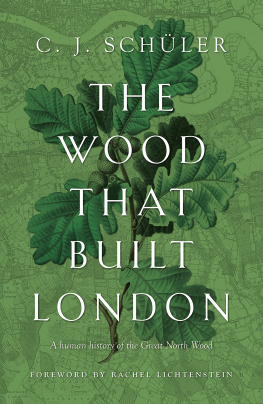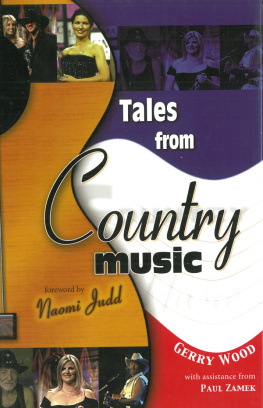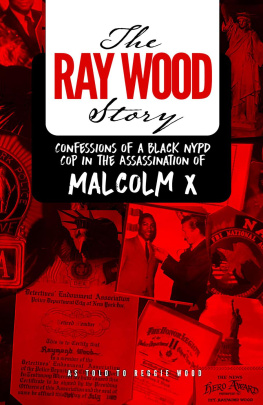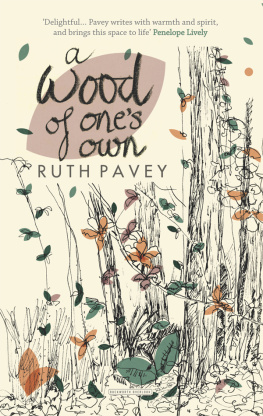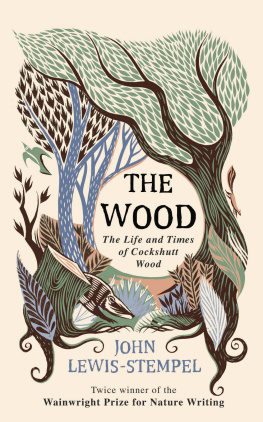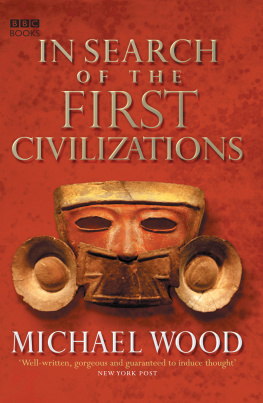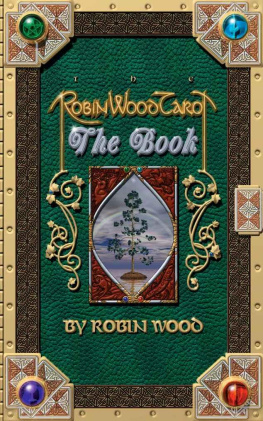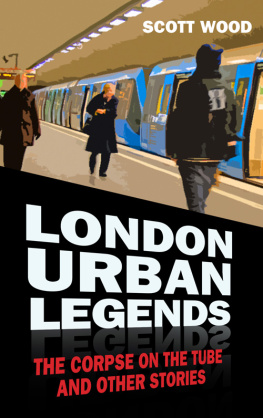
THE
WOOD
THAT
BUILT
LONDON
By the same author
Mapping the World
Mapping the City
Mapping the Sea and Stars
Writers, Lovers, Soldiers, Spies:
A History of the Authors Club of London, 18912016
Along the Amber Route: St Petersburg to Venice

THE WOOD
THAT
BUILT
LONDON
A human history of the Great North Wood
C. J. SCHLER
Foreword by Rachel Lichtenstein

First published in Great Britain in 2021 by
Sandstone Press Ltd
PO Box 41
Muir of Ord
Highland
IV6 7YX
Scotland
www.sandstonepress.com
All rights reserved. No part of this publication may be reproduced, stored or transmitted in any form without the express written permission of the publisher.
Copyright C. J. Schler 2021
Foreword copyright Rachel Lichtenstein 2021
Images by C. J. Schler unless otherwise ascribed.
Editor: Robert Davidson
Ecological Consultant: Mathew Frith, London Wildlife Trust
The moral right of C. J. Schler to be recognised as the author of this work has been asserted in accordance with the Copyright, Designs and Patents Act 1988.
eISBN: 978-1-913207-50-2
Jacket design by Daniel Benneworth-Gray
CONTENTS
FOREWORD
C. J. Schlers The Wood That Built London is an in-depth history of the woodland that once covered great stretches of what is now south London. This fascinating account reveals how medieval London was built from its timbers and fuelled by the charcoal they produced, before the metropolis expanded to engulf most of this ancient landscape into the surburban townscape. In twelve highly readable chapters, Schler tells us the stories of this place and its people, from the last great Ice Age, through the arrival of the Normans, the Plantagenet, Tudor and Stuart dynasties, the Industrial Revolution and the Victorian era to the present climate crisis.
This important work of contemporary place writing combines a lively human narrative with rigorous archival research from a wide range of sources, including botanical and zoological evidence, industrial and agrarian history, church records, and even sixteenth-century court witness statements. It preserves the memory of time-honoured landmarks that have long since disappeared, rivers that have vanished underground, place names that recall a rural landscape now buried beneath city streets, and ancient parish boundaries that still shape Londons boroughs. The result is a deep mapping of Londons ever-changing topography to set beside the work of Peter Ackroyd and Iain Sinclair, and a significant addition to the growing new genre of urban nature writing.
The history of mapmaking in this book makes fascinating reading in itself, as does the detailed account of coppicing and other woodland crafts, revealing the extent to which apparently natural spaces have been shaped by human intervention since earliest times, and how this has created rich, diverse habitats for a wide range of plant and animal species.
This is not just a book about geography and ecology: it is a rich treasure trove of stories about people past and present, characters through the centuries who have in different ways interacted with this place, who have been vividly brought to life and observed with wry detachment by the author. There are not just kings and bishops, but writers and butterfly collectors, landowners, woodsmen, surveyors, tenant farmers and quarrelsome neighbours. The echoes of these communities retain a ghostly presence in the remnants of woodland familiar to present-day locals. In addition to delving into archives, the author, who has been a conservation volunteer at Sydenham Hill Wood for the past decade, has tramped the surviving pockets of woodland, meeting and recording the stories of professional ecologists, volunteers and local campaigners. These direct encounters with a range of contemporary voices have made the book a collaborative project akin to the conservation work that he and his fellow volunteers have undertaken in the woods.
This is a tale for our times, and its implications are not just local but global. Only in recent years have we come to understand the speed and severity of climate change, the crucial role that woodlands play in protecting us and our world, and how the destruction of such places causes a decline of species diversity which, as the author rightly observes, is accelerating exponentially, weakening the planets immune system to a dangerous degree.
We exist within nature, and it is all around us, even in the most urban places. During the recent lockdown, travel restrictions have made us acutely sensitised to our hyper-local environment, exploring the wild within the city. This book highlights the importance of these surviving urban woodlands both to an ecosystem in peril as never before, and to our social and psychological wellbeing. We should be thankful to the individuals and public bodies, especially the London Wildlife Trust, who work to protect and promote the recovery of these ancient woodlands, and those, like the author of this important and timely book, whose research and artistry emphasise their enduring value to people and the planet.
Rachel Lichtenstein, London 2021
INTRODUCTION
Standing in the busy streets of South London today, it is hard to imagine that as recently as the eighteenth century, much of this suburban townscape was covered by an expanse of woodland and wooded commons, spreading almost unbroken for seven miles from Croydon to the Thames at Deptford. Its legacy can be found in many local place names: Norwood, Colliers Wood, Honor Oak, Gipsy Hill, Penge, which means Woods End, Woodside, and Selhurst, from the Anglo-Saxon for dwelling in a wood. A survival of the wildwood that once covered much of Britain, from Saxon times until the Industrial Revolution the wood was intensively managed to provide timber for construction and shipbuilding, bark, from which tannin was extracted for leathermaking, and charcoal for Londons blacksmiths and bakeries. Its produce helped to build the city that would, in the course of a millennium, whittle it down to a few surviving remnants.
The largest of these can be found at Dulwich and Sydenham Hill, where relict and secondary woodland still covers some twenty-five hectares. Smaller fragments can be found at One Tree Hill in Honor Oak, Biggin Wood, Spa Hill, Beaulieu Heights and Grangewood Park in Norwood, and at Long Lane to the south of Elmers End. The nearest ancient woodland to central London, they sustain wildlife in the capital, help cleanse its polluted air, and provide city dwellers with access not only to nature but to something rooted deep in our collective unconscious.
Woods occupy a central place in the folklore of many cultures as a scene of mystery, enchantment and transformation. They are the setting for dark fairy tales such as Little Red Riding Hood. They resonate in literature, from Dantes selva oscura, a place of confusion and challenge, to Shakespeares Forest of Arden, a sylvan refuge from the intrigue of the court. To enter a wood, wrote Roger Deakin in his book Wildwood, is to pass into a different world in which we ourselves are transformed. It is no accident that in the comedies of Shakespeare, people go into the greenwood to grow, learn and change. It is where you travel to find yourself, often, paradoxically, by getting lost.
Next page
